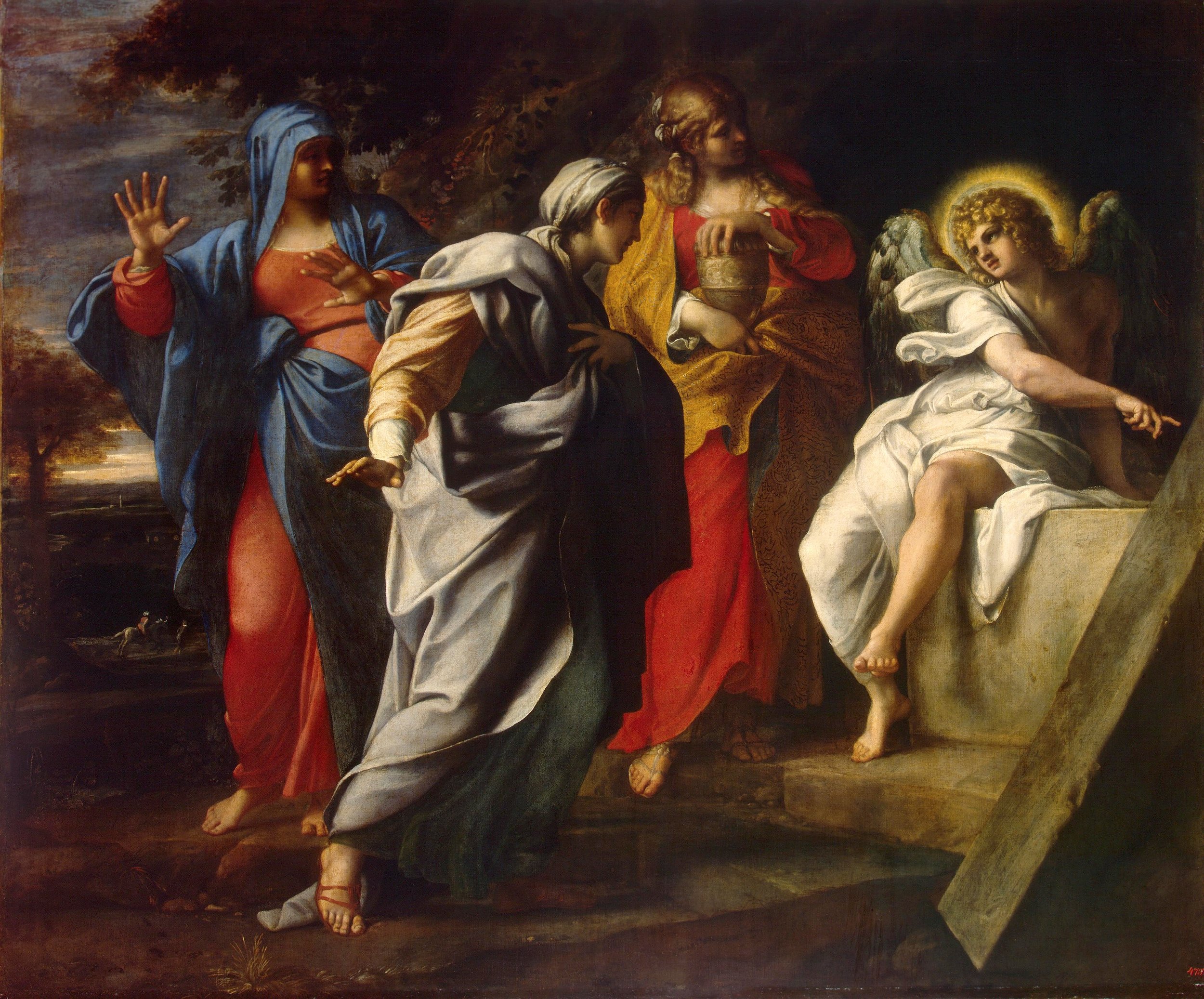“Woman, Why Are You Weeping?” The Redemptive and Personal Reality of the Resurrection
Annibale Carracci (1560–1609), Holy Women at Christ’s Tomb; image from Wikimedia Commons; {{PD-US}}.
Disclosure: This post may contain affiliate links, meaning Beautiful Christian Life LLC may get a commission if you decide to make a purchase through its links, at no cost to you.
Meditating on the resurrection has always been an encouragement to me. Whether looking at Old Testament shadows of the resurrection (Dan. 12:2) or Paul’s extensive teaching on the resurrection (1 Cor. 15), the Bible puts significant weight on the resurrection of Jesus. While each of the four gospels is unique in its own way, I have always loved the way John tells of the resurrection in his gospel account.
Prior to the resurrection of Jesus, you can bet a lot of hopes and desires were based upon Jesus as the Messiah. But his death made the disciples question everything (Luke 24:17-21). Imagine all the sorrow and confusion as their Messiah’s body laid lifeless in a borrowed tomb. Three years of life spent with one who could heal the sick, quiet the sea, and raise the dead, and now, the self-proclaimed Messiah laid lifeless in the dark; the hopes of the disciples dying with him.
The resurrection of Jesus is both a redemptive and personal reality.
In John 20 Mary Magdalene wanders to the tomb early in the morning. I imagine she is more satisfied being in the presence of the dead Messiah, who loved her and freed her from being possessed by seven demons than being anywhere else. As she walks near to the tomb that dark morning, a shocking sight confronts all her notions of normal. The stone that had been rolled in front of the tomb is removed (20:1). She immediately runs and tells the disciples, they run back to the tomb with her, and then the disciples run back home. Probably in the midst of confusion, an awakening of hope, and a desire to spread the news, the disciples are ecstatic. John notes in verse 11, however, that Mary stays at the tomb. What follows is a beautiful uncovering of the personal and redemptive reality of the resurrection of Jesus.
After a short discussion with two angels (more on that another time), Mary believes that someone has stolen Jesus' body. She has not yet come to grasp what that rolled away stone means. The next thing that we learn from John is an invitation into some of the most beautiful words ever heard, especially for Mary. Jesus decides to say his first resurrected words to her.
Jesus knows Mary and he loves her.
As Mary is still looking at the tomb, not realizing the depth of what is happening, Jesus speaks from behind her, "Woman, why are you weeping? Whom are you seeking?" The next part of verse 15 tells us that she had mistaken him to be a gardener who moved Jesus’ body (more about this in a moment) away from the tomb. Now, with her turned around, Jesus' resurrected words move from general to specific. He says, "Mary" (John 20:15). Just, "Mary." I don't mean just in a limited sense but in the specific. His attention and his one word are so specific. All her fears, all her lost hope, and all her confusion are completely dealt with through the most wonderful word she may have ever heard, and the beauty lies not in her name but in the one who is saying it to her.
This has always been one of my favorite scenes in the gospels because it's so personal. Jesus knows Mary and he loves her. I've always imagined that any hope she had prior to his death, any hope that was lost, was increased a hundredfold when he looked into her eyes and said, "Mary." After she hears the resurrected voice of Jesus, she then runs back and proclaims that she saw the Lord (John 20:18). Not only was Mary the first to hear and see the resurrected King, I think she would have understood years later that John was also telling something special to his audience in this story involving her.
Jesus, the Gardener of the new creation, knows his own.
It is no mistake that John adds the detail of Mary thinking that Jesus was the gardener. John's gospel is structured around garden imagery. This would have been apparent to the first century Jew, but it is a bit harder for us to see. You see, John opens his gospel not at the birth of Jesus but at the beginning of the world when God placed the first humans in a garden (John 1:1). Later in John 19:41, we are told that Jesus was crucified in a garden with a "new tomb." This is new creation imagery that is meant to tip the reader off that something new is happening in the garden with a new tomb. The climax is found in John 20 when the person Mary believed to be a gardener is Jesus himself, who is in fact the Gardener of the new creation. You see, his resurrection from the dead caused this new creation to sprout forth, and the mind-boggling thing is that we will follow in his steps.
This is what Paul means in his long teaching on the resurrection in 1 Corinthians 15. In verses 22-23 he writes,
For as in Adam all die, so also in Christ shall all be made alive. But each in his own order: Christ the firstfruits, then at his coming those who belong to Christ.
The first Adam was a gardener who did not protect the garden and was kicked out. Jesus is the new creation Gardener who lays down his life and bursts forth from the dead as the Vine of life (John 15). He is the firstfruits of the harvest that promises all in him will rise with him. The first gardener brought death, the second gave life. And like he did with Mary, Jesus will one day call by name into his eternal presence everyone who believes in him. It will be the sweetest of sounds. Right now, all believers have this new life (2 Cor. 5:17), and one day we will experience new life in its fullness (1 John 3:1-2). This Gardener knows you, loves you, and is caring for you until that great day. Rejoice in the resurrection.
This article has been revised since its original publishing date.
Related Articles:
Jesus Is the True and Faithful Gardener Who Cares for Your Soul
12 Reasons Why Jesus Meant It When He Said, “It Is Finished"
Recommended:
The Cross He Bore: Meditations on the Suffering of the Redeemer by Frederick S. Leahy

